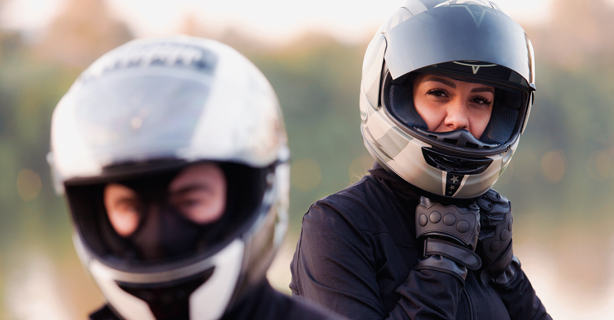Cool weather motorcycle riding tips: Don’t dress to impress
0 min. read
We’re in December, and we’re all experiencing cooler weather. That means a few different things when it comes to heading out for a ride.
Not only do you need to prep the bike for cooler weather, but you need to dress appropriately, too. This isn’t the time to dress to impress—unless you know someone who looks fondly upon those dressed safely and warmly.
Wearing “all the gear all the time” is the best way to ride. During these winter months, you need to add protection from the cold to our gear selection. Being cold on a motorcycle isn’t just uncomfortable, it’s also dangerous and can lead to health issues such as hypothermia.
Seasonal temperature fluctuations
In some regions of the country this time of year, you can experience up to a 40-degree difference from daily low temperatures to daily high temperatures. To manage this, the best dressing behavior is layering gear. This way you can easily adjust to the changing temperatures as the day—and your ride—progresses.
Layer it on
Motorcycle riding, like any winter activity, requires a little more thought regarding the choice of layers. It’s not simply long pants, long-sleeve shirt, jacket, helmet, and gloves.
One thing to keep in mind is the need to be warm at riding speeds—not just when standing around—yet flexible enough to safely operate motorcycle controls.
Let’s take a basic look at layering, starting closest to the skin and moving outward:
Base layer: The is the closest layer to your skin. Think socks, long johns, glove liners, and a head covering. The main goal with this layer is retaining the body’s warmth, yet allowing moisture to wick away from the skin. Even in very low temperatures, when dressed for high wind-chill factors, you can sweat, and this will make you even colder if not managed properly.
Street layer: When you peel off all the riding gear at rest stops, this is the layer where you can express our style. Lined or insulated jeans can add some warmth and some fashion sense. Turtlenecks are great to seal out cold air at the wrists and neck. If turtlenecks are more for your grandparents, consider adding a thin version under your favorite riding shirt.
Additional insulating layers: Between your outer layer of protective riding gear and street clothes is the place to add some insulating layers. These are the layers easiest to adjust as conditions change.
Outer layer: This is where your protective riding gear comes into play. As an experienced rider, you should already have your outer layer ready for every ride.
Electric riding gear
For those who opt for electrical gear, it should be worn on top of the street layer—close enough to your skin to receive some heat benefits. The insulating layers on top of the electric gear will hold in that heat. Wearing the layers in this order improves performance and allows you to conserve power on the bike by using lower settings.
Boots, gloves, and the ability to move
As you know, heavy socks and glove liners can make boots and gloves a tight fit. The same applies when adding more clothes under your riding jacket. If your gear fits too tight, you defeat the purpose of insulation that requires air space to be effective. Tight gear also restricts your movement, thus reducing your ability to safely control the motorcycle.
What to do? While it might not be a form-fitting fashion statement, try on larger sizes to accommodate more layers.
Cooler weather shouldn’t keep you off your bike. With some planning and proper gear, you can enjoy the unique riding experience this time of year brings, and keep the joy of riding going year-round.
Till next time, ride safe!
Even if you're not planning on riding in the winter, you can still help protect your bike. Check out our tips for storing your motorcycle in the winter.
This time of year, sunset comes earlier, which means you're more likely to spend some time riding in the dark. Before your next ride, review our 10 safety tips for motorcycle riding at night.
The general information in this blog is for informational or entertainment purposes only. View our blog disclaimer.
*Data accuracy is subject to this article's publication date.







